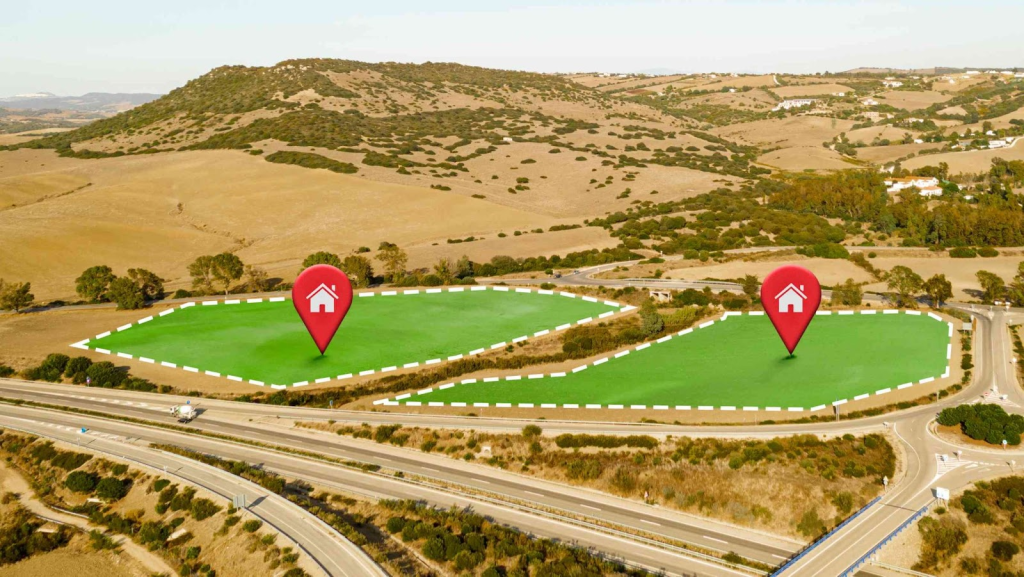Every single land parcel in India has a document that declares the ownership, property area and property rights. Similar to a person having a set of identities like an Adhar Card, Pan Card, etc. The same as land documents are called the Record of Right (ROR) or Khatian.
Khatian is mainly used in rural areas for checking land details. The person from the urban areas gets difficult to understand the details mentioned in the Khatian. So get the details about the Khatian and other related words in this blog.
Before buying a house you check some details of how to buy a house, just like you need to check Khatian in rural areas at the time of buying land.
What Is a Khatian Number?

Source: generalbihar
A Khaitan number is a unique number associated with the land records maintained by the Government of India. It is a system of land ownership records used in rural areas to identify land and its ownership. These numbers are usually embedded in the land revenue documents maintained by the government and are also printed on the title deeds of the land. Khatian numbers are used to keep track of the ownership of land over some time and to keep the records of land and its ownership up to date. This system allows for a transparent and efficient system for monitoring land and its ownership.
The Khatian number is used to identify a plot of a land records system, which is known as the Record of Rights (RoR). This system has been digitized and is available online.
Checking all the details at the time of buying property not only in the village and rural area but even in the city is most important for preventing any fraud and gambling. Contact our property expert for the best and most secure housing property.

Why is Khatian or ROR important?
Khatian or ROR (Record of Rights) is an important document of land ownership and is a valuable asset for anyone owning land. It is issued by the government’s revenue department and provides a comprehensive record of all the legal rights associated with land ownership. This document proves the ownership of land and is used as a primary source of recording and transfer of ownership.
Turnkey Projects in Housing: Meaning, Examples, & Advantages
Khatian or ROR is important as it acts as legal proof of land ownership in India. It is required for all legal matters related to buying and selling of land. It also provides information about the land title and its size, boundaries, rights of usage, transfer of ownership, and more.
Khatian or ROR is also essential for taxation purposes. It helps in calculating the fair market value of land and also helps to determine the annual tax that needs to be paid by the owner. It is also used to calculate the stamp duty and registration charges while buying or selling land.
Khatian or ROR is also an important document used in settling land disputes. It helps in determining the rightful owner of a particular land and in proving who legally owns a particular property.
Khatian or ROR is important due to its extensive nature and the information it provides. It is the most reliable source of land records and is valuable to anyone owning land or property in India.
What information is mentioned in Khatian?
Khatian is a document that contains important information related to land ownership. It is issued by the land and revenue department of the Indian Government and contains valuable information such as the Khatian number, District and J.L number, land area (Dhag wise), nature and class of the land, owner’s name and address, any encumbrances or restrictions.
A Khatian, an indispensable document in land transactions, provides a detailed record of land-related information. It includes data about tenants, rental agreements, tax payments, and legal disputes. Whether you’re buying, selling, mortgaging, or transferring property, a Khatian is crucial. Also, for those considering painting for bedroom Vastu, understanding this document is vital for making an informed decision about land and property in alignment with Vastu principles.
What is Khatain, Khasra, Khata, Khewat, Khatauni
Khatian:
Khatian is the main and the most important document of the land records. Very village has one Khatian which has all the details of every land which is under in the particular village.
Khata:
In the Khatia you will get the Khata no. which is the same as an account number in which all the details are mentioned of the one family. How much land they have, how land is held by which family member. These are all details you will get in Khata.
Khasra:

Khasra means a land number. Every single land has a number which is called the Khasra number. All the details like which type of land it is, if it is agricultural then which plants are growing there, how much quantity. All the details are mentioned in this. The details are updated three times (After every four months) every year by the Lekhpal.
Top 10 Best Cities to Live and Work in India
Khatauni:

In short Khatauni number is the land number/ Plot number. When you get the Khata number, that Khasra number is mentioned. If a person has multiple lands in a different location in the village, then all the land number (Khatauni number) mention in that. Even if one piece of land has multiple owners this will also mention in the Khatauni number. This is an update after every five years by the Lekhpal.
Khewat:
Khewat is the same as a Khatami. In the same family where the family members own a different land at a different location, those location details are mentioned in the Khewat number. This number easily clarifies who is the owner of the particular land. The land owner list is mentioned in the Khewat. Khewat may get an update or change every 4 years to prevent any land-related fraud.
For which purpose do we use Khatian or ROR?
Khatian or ROR (Record of Rights) is a system of land records available in India. It is used as an authentic record of land ownership and has immense importance for the safety and security of a piece of land. It provides details about the ownership of the land, its boundaries, area, cultivable and non-cultivable area, and other aspects related to it. It also provides important information regarding the rights of tenants and cultivators.
The most important element of the ROR is the Khaitan number, which is the unique identifier assigned by the concerned authority to each piece of land. The Khaitan number is used to locate and verify the land records and can help to identify any disputed claims on the land. By carrying out a proper record of rights, the government ensures that no dispute or confusion arises in the future.
How to find the Khasra or Khatauni number in different states Online?
State | Website Name and like |
Uttarakhand | |
Uttar Pradesh | |
Assam | |
Karnataka | |
Telangana | |
Gujarat | |
Haryana | |
Punjab | |
Odisha | |
Rajasthan | |
Madhya Pradesh |
Unpacking Khatian Numbers: A Comprehensive Guide to Understanding and Utilizing Them.
Khatian is the main document. In that, we get the Khata no, Khasra, Khatauni and Kehwat. All the numbers are of their importance. Every number indicates different details about the land, like land type, owners, area, etc. But this number is only mandatory in the rural areas of the country. Urban areas and smart cities have different types of documents.
We hope all the confusion and queries about the Khaitan number are solved in this blog. If you are the land owner and you don’t know about your Khaitan and Khata no., contact your state authorities and get the Khata no as soon as possible for your security.

I’m a Digital Marketing Executive and a Content Writer at PropertyCloud. Passionate about crafting compelling, concise, and reader-friendly content. I am dedicated to delivering the best possible experience through words from the past few years.











[…] It is a great way to compare different cultivable lands, as properties of the same size may have different yields depending on the soil type and other factors. Bigha is also used to calculate tax rates and ownership of agricultural land in India, Bangladesh, and Nepal. In many parts of India, all these details about the land like the type of land, size, etc. are mentioned in the Khatian. […]